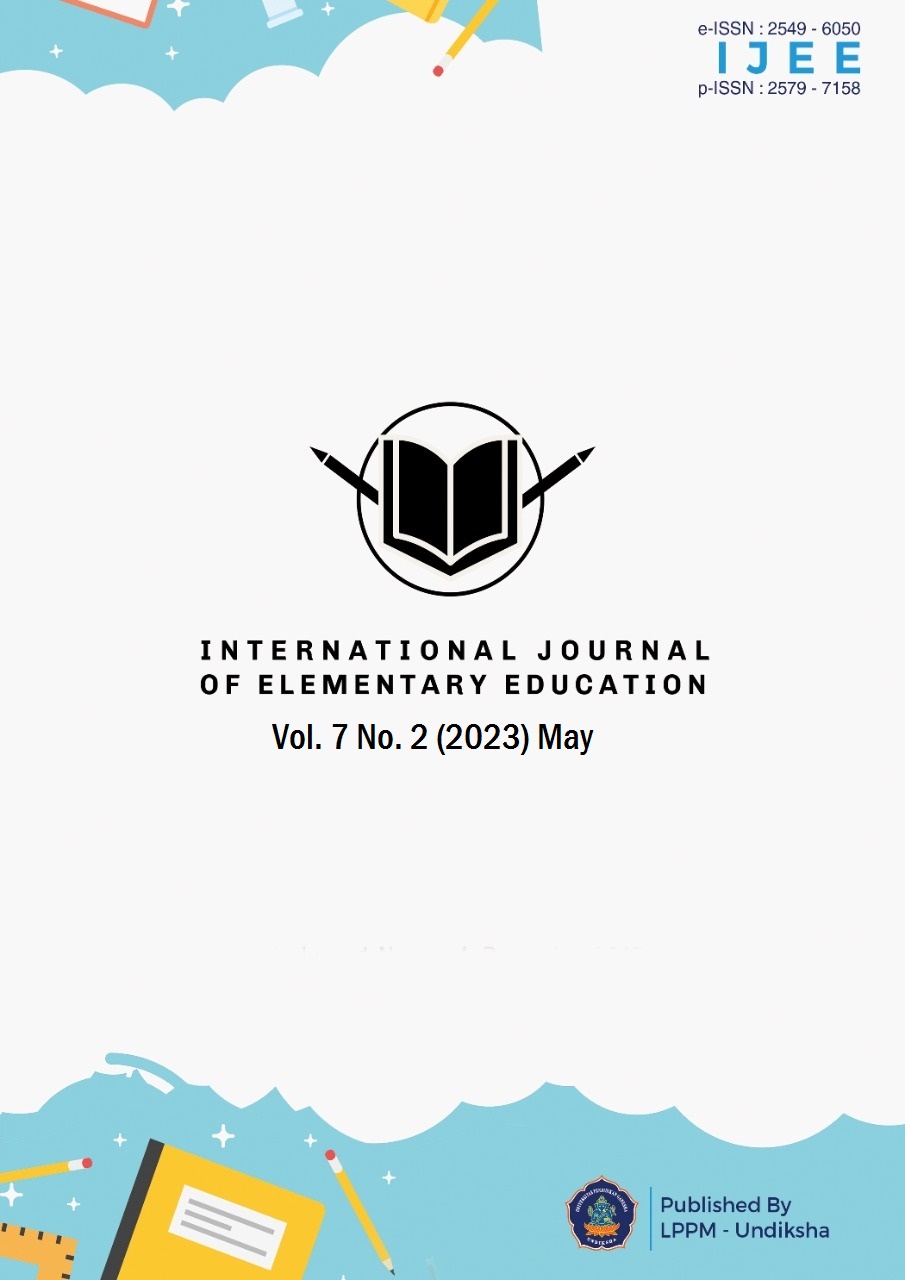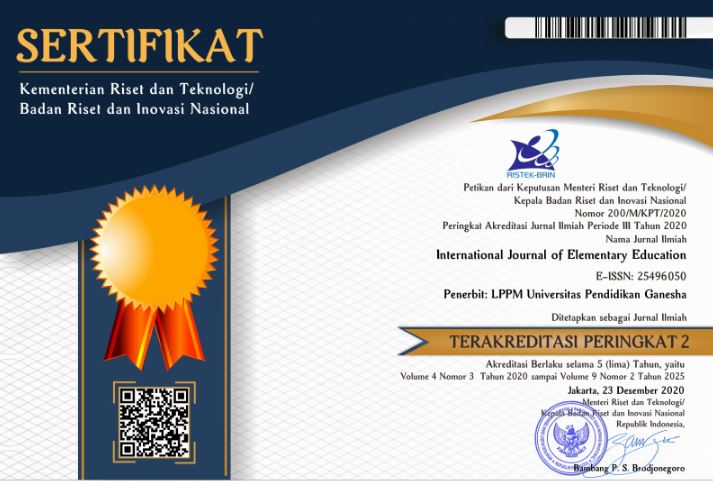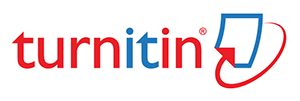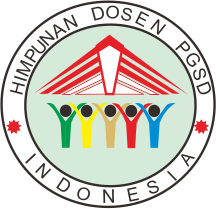High-Order Questions Improve Students' Critical Thinking Skills In Elementary Schools
DOI:
https://doi.org/10.23887/ijee.v7i2.61607Keywords:
High-Order Thinking Questions, Critical Thinking Skills, Elementary SchoolAbstract
Critical thinking is an essential and well-established skill for meeting workers' demands in the 21st century. In today's era, teaching and training students in critical thinking skills, even from elementary school, is essential. However, there are still many students who have low critical thinking skills. This study aims to analyze and describe the effect of the effectiveness of high-level questions in developing students' critical thinking skills in elementary schools. The research method used a one-group pretest and posttest experimental design, which was carried out in three elementary schools. The population of this study was three teachers and 102 students. Instruments in this quantitative research include questionnaires, observations, and interview guidelines. Data analysis techniques in this study are descriptive qualitative and quantitative analysis and inferential statistics. The study results showed a significant difference between the pretest and posttest scores of the students obtained from the results of studying the high-level questions. Second, high-level questions are practical for developing elementary school students critical thinking skills. It is concluded that high-order questions can improve critical thinking skills in elementary school students.
References
Anggraeni, A., Supriana, E., & Hidayat, A. (2019). Pengaruh Blended Learning terhadap Kemampuan Berpikir Kritis Siswa SMA pada Materi Suhu dan Kalor. Jurnal Pendidikan: Teori, Penelitian, dan Pengembangan, 4(6), 758. https://doi.org/10.17977/jptpp.v4i6.12505. DOI: https://doi.org/10.17977/jptpp.v4i6.12505
Ani Rahmawati, Nur Lailatin Nisfah, S. K. (2019). The Capability Analysis of High Order Thinking Skills (HOTS) on Dynamic Electricity Material in Junior High School. JPPPF: Jurnal Penelitian dan Pengembangan Pendidikan Fisika, 5(3). https://doi.org/10.21009/1.05211. DOI: https://doi.org/10.21009/1.05211
Anwar, Y., Selamet, A., Huzaifah, S., & Madang, K. (2020). Training in developing higher-order thinking based online test instrument for biology teachers in Sekayu City. Journal of Community Service and Empowerment, 1(3), 150–155. https://doi.org/10.22219/jcse.v1i3.12241. DOI: https://doi.org/10.22219/jcse.v1i3.12241
Arwanda, P., Irianto, S., & Andriani, A. (2020). Pengembangan Media Pembelajaran Articulate Storyline Kurikulum 2013 Berbasis Kompetensi Peserta Didik Abad 21 Tema 7 Kelas Iv Sekolah Dasar. Al-Madrasah: Jurnal Pendidikan Madrasah Ibtidaiyah, 4(2), 193. https://doi.org/10.35931/am.v4i2.331. DOI: https://doi.org/10.35931/am.v4i2.331
Azizah, M., Sulianto, J., & Cintang, N. (2018). Analysis of Critical Thinking Skills of Elementary School Students in Learning Mathematics Curriculum 2013. Jurnal Penelitian Pendidikan, 35(1), 61–70. https://doi.org/10.15294/jpp.v35i1.13529.
Barnett, J. E., & Francis, A. L. (2012). Using higher order thinking questions to foster critical thinking: A classroom study. Educational Psychology, 32(2), 201–211. https://doi.org/10.1080/01443410.2011.638619. DOI: https://doi.org/10.1080/01443410.2011.638619
Bezanilla, M. J., Fernández-Nogueira, D., Poblete, M., & Galindo-Domínguez, H. (2019). Methodologies for teaching-learning critical thinking in higher education: The teacher’s view. Thinking skills and creativity, 33, 100584. https://doi.org/10.1016/j.tsc.2019.100584. DOI: https://doi.org/10.1016/j.tsc.2019.100584
Cetin, Y., Mirasyedioglu, S., & Cakiroglu, E. (2019). An Inquiry Into The Underlying Reasons for The impact of Technology Enhanced Problem-Based Learning Activities on Students’ Attitudes and Achievement. Eurasian Journal of Educational Research, 19(79), 191–208. https://doi.org/10.14689/ejer.2019.79.9. DOI: https://doi.org/10.14689/ejer.2019.79.9
Dahlan, D., Permana, L., & Oktariani, M. (2020). Teacher’s competence and difficulties in constructing hots instruments in economics subject. Cakrawala Pendidikan, 39(1), 111–119. https://doi.org/10.21831/cp.v39i1.28869. DOI: https://doi.org/10.21831/cp.v39i1.28869
Davidi, E. I. N., Sennen, E., & Supardi, K. (2021). Integrasi Pendekatan STEM (Science, Technology, Enggeenering and Mathematic) Untuk Peningkatan Keterampilan Berpikir Kritis Siswa Sekolah Dasar. Scholaria: Jurnal Pendidikan dan Kebudayaan, 11(1), 11–22. https://doi.org/10.24246/j.js.2021.v11.i1.p11-22. DOI: https://doi.org/10.24246/j.js.2021.v11.i1.p11-22
Dewi, D. R. (2019). Pengembangan Kurikulum Di Indonesia Dalam Menghadapi Tuntutan Abad Ke-21. As-Salam: Jurnal Studi Hukum Islam & Pendidikan, 8(1), 1–22. https://doi.org/10.51226/assalam.v8i1.123. DOI: https://doi.org/10.51226/assalam.v8i1.123
Dwyer, C., Hogan, M. J., & Stewart, I. (2011). The promotion of critical thinking skills through argument mapping. In C. P. Horvath & J. M. Forte (Reds), Critical Thinking.
Ennis, R. (2011). Critical thinking: Reflection and perspective Part II. Inquiry: Critical thinking across the Disciplines, 26(2), 5–19. https://doi.org/10.5840/inquiryctnews201126215. DOI: https://doi.org/10.5840/inquiryctnews201126215
Fatmawati, A., Zubaidah, S., Mahanal, S., & Sutopo. (2019). Critical Thinking, Creative Thinking, and Learning Achievement: How They are Related. Journal of Physics: Conference Series, 1417(1). https://doi.org/10.1088/1742-6596/1417/1/012070. DOI: https://doi.org/10.1088/1742-6596/1417/1/012070
Fitriani, W., Suwarjo, S., & Wangid, M. N. (2021). Berpikir Kritis dan Komputasi: Analisis Kebutuhan Media Pembelajaran di Sekolah Dasar. Jurnal Pendidikan Sains Indonesia, 9(2), 234–242. https://doi.org/10.24815/jpsi.v9i2.19040. DOI: https://doi.org/10.24815/jpsi.v9i2.19040
Ghufron, S. N., Syahruddin., K., & Mustofa. (2023). The effect of STAD-type cooperative learning based on a learning tool on critical thinking ability in writing materials. International Journal of Instruction, 16(1), 61–84. https://doi.org/10.29333/iji.2023.1614a. DOI: https://doi.org/10.29333/iji.2023.1614a
Gunada, I. W., Ayub, S., Doyan, A., Verawati, N. N. S. P., & Hikmawati, H. (2021). Pengembangan Buku Ajar Sejarah Fisika Berbasis Higher Order Thingking Skill (HOTS). Jurnal Pendidikan Fisika dan Teknologi, 7(1), 59–65. https://doi.org/10.29303/JPFT.V7I1.2767. DOI: https://doi.org/10.29303/jpft.v7i1.2767
Hamdu, G., Fuadi, F. N., Yulianto, A., & Akhirani, Y. S. (2020). Items Quality Analysis Using Rasch Model To Measure Elementary School Students’ Critical Thinking Skill On Stem Learning. JPI (Jurnal Pendidikan Indonesia), 9(1). https://doi.org/10.23887/jpi-undiksha.v9i1.20884. DOI: https://doi.org/10.23887/jpi-undiksha.v9i1.20884
Hasanah, U., Astra, I. M., & Sumantri, M. S. (2023). Exploring the need for using science learning multimedia to improve critical thinking elementary school students: Teacher perception. International Journal of Instruction, 16(1), 417–440. https://doi.org/10.29333/iji.2023.16123a. DOI: https://doi.org/10.29333/iji.2023.16123a
Hidayat, W., & Sari, V. T. A. (2019). Kemampuan Berpikir Kritis Matematis dan Adversity Quotient Siswa SMP. Jurnal Elemen, 5(2), 242. https://doi.org/10.29408/jel.v5i2.1454. DOI: https://doi.org/10.29408/jel.v5i2.1454
Hobri, Septiawati, I., & Prihandoko, A. C. (2018). High-order thinking skill in contextual teaching and learning of mathematics based on lesson study for learning community. International Journal of Engineering and Technology(UAE), 7(3), 1576–1580. https://doi.org/10.14419/ijet.v7i3.12110. DOI: https://doi.org/10.14419/ijet.v7i3.12110
Ichsan, I. Z., Sigit, D. V., Miarsyah, M., Ali, A., Arif, W. P., & Prayitno, T. A. (2019). HOTS-AEP: Higher order thinking skills from elementary to master students in environmental learning. European Journal of Educational Research, 8(4), 935–942. https://doi.org/10.12973/eu-jer.8.4.935. DOI: https://doi.org/10.12973/eu-jer.8.4.935
Illahi, T. rahmah, Sukartiningsih, W., & Subroto, W. T. (2018). Pengembangan Multimedia Interaktif pada Pembelajaran Materi Jenis-Jenis Pekerjaan Untuk Meningkatkan Kemampuan Berpikir Kritis. Jurnal Kajian Pendidikan dan Hasil Penelitian, 4(3). https://doi.org/10.26740/jrpd.v4n3.p826-. DOI: https://doi.org/10.26740/jrpd.v4n3.p826-835
Ilmi, A. M., Sukarmin, & Sunarno, W. (2020). Development of TPACK based-physics learning media to improve HOTS and scientific attitude. Journal of Physics: Conference Series, 1440(1). https://doi.org/10.1088/1742-6596/1440/1/012049. DOI: https://doi.org/10.1088/1742-6596/1440/1/012049
Jalinus, N., Verawardina, U., Azis Nabawi, R., & Darma, Y. (2021). Developing Blended Learning Model in Vocational Education Based On 21st Century Integrated Learning and Industrial Revolution 4.0. Turkish Journal of Computer and Mathematics Education, 12(8), 1239–1254. https://doi.org/10.17762/turcomat.v12i9.3480.
Kurniati, D., Harimukti, R., & Jamil, N. A. (2016). Kemampuan berpikir tingkat tinggi siswa SMP di Kabupaten Jember dalam menyelesaikan soal berstandar PISA. Jurnal Penelitian dan Evaluasi Pendidikan, 20(2), 142–155. https://doi.org/10.21831/pep.v20i2.8058. DOI: https://doi.org/10.21831/pep.v20i2.8058
Kurniawan, G. E. (2019). Pengembangan Modul Pembelajaran Berbasis Model Problem Solving Untuk Meningkatkan High Order Thinking Skill Pada Pelajaran Ipa Pokok Bahasan Fluida Statis Siswa Kelas Viii Smp N 7 Cirebon Tahun Ajaran 2018/2019. Mangifera Edu, 4(1), 63–72. https://doi.org/10.31943/mangiferaedu.v4i1.531. DOI: https://doi.org/10.31943/mangiferaedu.v4i1.531
Lombardi, L., Mednick, F. J., Backer, F., & Lombaerts, K. (2022). Teachers’ Perceptions of Critical Thinking in Primary Education. International Journal of Instruction, 15(4). https://doi.org/10.29333/iji.2022.1541a. DOI: https://doi.org/10.29333/iji.2022.1541a
Lu, K., Yang, H. H., Shi, Y., & Wang, X. (2021). Examining the key influencing factors on college students ’ higher ‑ order thinking skills in the smart classroom environment. Int J Educ Technol High Educ, 18(1), 1–13. https://doi.org/10.1186/s41239-020-00238-7. DOI: https://doi.org/10.1186/s41239-020-00238-7
Makhrus, M., Harjono, A., Syukur, A. B., & Muntari, S. (2018). Identifikasi kesiapan LKPD guru terhadap keterampilan abad 21 pada pembelajaran IPA SMP. Jurnal Ilmiah Profei Pendidikan, 3(2), 124–128. https://doi.org/10.29303/jipp.v3i2.20. DOI: https://doi.org/10.29303/jipp.v3i2.20
McLaren, P. (2015). Life in schools: An introduction to critical pedagogy in the foundations of education. Routledge.
Muslimin, I., & Abidin, M. (2023). Controversial religious issues for improving students critical thinking skill in higher education. International Journal of Instruction, 16(1). https://doi.org/10.29333/iji.2023.1617a. DOI: https://doi.org/10.29333/iji.2023.1617a
Nahdi, D. S. (2015). Meningkatkan Kemampuan Berpikir Kritis Dan Penalaran Matematis Siswa Melalui Model Brain Based Learning. Jurnal Cakrawala Pendas, 1(1). https://doi.org/10.31949/jcp.v1i1.341. DOI: https://doi.org/10.31949/jcp.v1i1.341
Nurrohmi, Y., Utaya, S., & Utomo, D. H. (2017). Pengaruh Model Pembelajaran Discovery Learning Terhadap Kemampuan Berpikir Kritis. Jurnal Pendidikan, 2(10). https://doi.org/10.17977/jptpp.v2i10.10062.
Ossa Cornejo, C., Lepe Martínez, N., Díaz Mujica, A., Merino Escobar, J., & Larraín Sutil, A. (2018). Programas de pensamiento crítico en la formación de docentes Iberoamericanos. Revista de currículum y formación del profesorado, 22(4), 443–462. https://doi.org/10.30827/profesorado.v22i4.8432. DOI: https://doi.org/10.30827/profesorado.v22i4.8432
Purnami, W., Ashadi, Suranto, Sarwanto, Sumintono, B., & Wahyu, Y. (2021). Investigation of Person Ability and Item Fit Instruments of Eco Critical Thinking Skills in Basic Science Concept Materials for Elementary Pre-Service Teachers. Jurnal pendidikan IPA, 10(1), 127–137. https://doi.org/10.15294/jpii.v10i1.25239. DOI: https://doi.org/10.15294/jpii.v10i1.25239
Puspita, V., & Dewi, I. P. (2021). Efektifitas E-LKPD Berbasis Pendekatan Investigasi terhadap Kemampuan Berfikir Kritis Siswa Sekolah Dasar. Jurnal Cendekia : Jurnal Pendidikan Matematika, 5(1), 86–96. https://doi.org/10.31004/cendekia.v5i1.456. DOI: https://doi.org/10.31004/cendekia.v5i1.456
Rahmatih, A. N., Indraswati, D., Gunawan, G., Widodo, A., Maulyda, M. A., & Erfan, M. (2021). An Analysis of Questioning Skill in Elementary School Pre-service Teachers Based on Bloom’s Taxonomy. Journal of Physics: Conference Series, 1779(1), 1–9. https://doi.org/10.1088/1742-6596/1779/1/012073. DOI: https://doi.org/10.1088/1742-6596/1779/1/012073
Riadi, I. K., & Tantra, D. K. (2020). Students’ reading competency on higher-order thinking items in the junior high schools. Journal of Education Research and Evaluation, 4(3). https://doi.org/10.23887/jere.v4i3.27621. DOI: https://doi.org/10.23887/jere.v4i3.27621
Rusdin, N. M. (2018). Teachers’ Readiness in Implementing 21st Century Learning. International Journal of Academic Research in Business and Social Sciences, 8(4), 1271–1284. https://doi.org/10.6007/IJARBSS/v8-i4/4270. DOI: https://doi.org/10.6007/IJARBSS/v8-i4/4270
Samo, D. D., Darhim, D., & Kartasasmita, B. (2017). Developing Contextual Mathematical Thinking Learning Model to Enhance Higher-Order Thinking Ability for Middle School Students. International Education Studies, 10(12), 17. https://doi.org/10.5539/ies.v10n12p17. DOI: https://doi.org/10.5539/ies.v10n12p17
Sanderayanti, D. (2015). Pengaruh Motivasi Berprestasi Dan Kemampuan Berpikir Kritis Terhadap Hasil Belajar Matematika Siswa Di Sdn Kota Depok. Jurnal Pendidikan Dasar, 6(2), 222. https://doi.org/10.21009/jpd.062.04. DOI: https://doi.org/10.21009/JPD.062.04
Sari, S. P., & Siregar, E. F. S. (2020). Pengaruh Model Pembelajaran Abad 21 4Cs Dalam Meningkatkan Keterampilan Membuat Pertanyaan Tingkat Tinggi Mahasiswa PGSD FKIP Pada Materi Gejala Alam TA 2019/2020. Jurnal Ilmiah Aquinas, 3(2), 208–215. https://doi.org/10.54367/aquinas.v3i2.720. DOI: https://doi.org/10.54367/aquinas.v3i2.720
Sartika, I. (2019). Kemampuan Berpikir Kritis Dalam Pendekatan Matematika Realitik di Sekolah Dasar. AR-RIAYAH : Jurnal Pendidikan Dasar, 3(2), 101. https://doi.org/10.29240/jpd.v3i2.1151. DOI: https://doi.org/10.29240/jpd.v3i2.1151
Sasson, I., Yehuda, I., & Malkinson, N. (2018). Fostering the skills of critical thinking and question-posing in a project-based learning environment. Thinking Skills and Creativity, 29, 203–212. https://doi.org/10.1016/j.tsc.2018.08.001. DOI: https://doi.org/10.1016/j.tsc.2018.08.001
Seibert, S. A. (2020). Problem-based learning: A strategy to foster generation Z’s critical thinking and perseverance. Teaching and Learning in Nursing, 000, 2–5. https://doi.org/10.1016/j.teln.2020.09.002. DOI: https://doi.org/10.1016/j.teln.2020.09.002
Siregar, I., Rahmadiyah, F., & Siregar, A. F. Q. (2022). Auditorium Model Assessment with Corrected Acoustic Function. British Journal of Physics Studies, 1(1), 01–06. DOI: https://doi.org/10.32996/bjps.2022.1.1.6
Sutiani, A., Situmorang, M., & Silalahi, A. (2021). Implementation of an Inquiry Learning Model with Science Literacy to Improve Student Critical Thinking Skills. International Journal of Instruction, 14(2), 117–138. https://doi.org/10.29333/iji.2021.1428a. DOI: https://doi.org/10.29333/iji.2021.1428a
Syawaludin, A., Gunarhadi, & Rintayati, P. (2019). Development of augmented reality-based interactive multimedia to improve critical thinking skills in science learning. International Journal of Instruction, 12(4), 331–344. https://doi.org/10.29333/iji.2019.12421a. DOI: https://doi.org/10.29333/iji.2019.12421a
Tanudjaya, C. P., & Doorman, M. (2020). Examining higher order thinking in Indonesian lower secondary mathematics classrooms. Journal on Mathematics Education, 11(2), 277–300. https://doi.org/10.22342/jme.11.2.11000.277-300. DOI: https://doi.org/10.22342/jme.11.2.11000.277-300
Van Laar, E., Van Deursen, A. J., Van Dijk, J. A., & de Haan, J. (2020). Determinants of 21st-century skills and 21st-century digital skills for workers: A systematic literature review. SAGE Open, 10(1). https://doi.org/10.1177/2158244019900176. DOI: https://doi.org/10.1177/2158244019900176
Wahyuddin, W., Satriani, S., & Asfar, F. (2021). Analisis Kemampuan Menyelesaikan Soal High Order Thinking Skills Ditinjau Dari Kemampuan Berpikir Logis. Jurnal Aksioma, 10(2). https://doi.org/10.24127/ajpm.v10i2.3480. DOI: https://doi.org/10.24127/ajpm.v10i2.3480
Wartono, J. T., Batlolona, J. R., & Grusche, S. (2018). Inquiry-discovery empowering high order thinking skills and scientific literacy on substance pressure topic. INQUIRY. https://doi.org/10.24042/jipfalbiruni.v7i2.2629. DOI: https://doi.org/10.24042/jipfalbiruni.v7i2.2629
Widyawati, A., Dwiningrum, S. I. A., & Rukiyati, R. (2021). Pembelajaran ethnosciences di era revolusi industri 4.0 sebagai pemacu Higher Order Thinking Skills (HOTS). Jurnal Pembangunan Pendidikan: Fondasi dan Aplikasi, 9(1). https://doi.org/10.21831/jppfa.v9i1.38049. DOI: https://doi.org/10.21831/jppfa.v9i1.38049
Yildirim, B., & Ozkahraman, S. (2011). Critical thinking in nursing process and education. International journal of humanities and social science, 1(13), 257–262.
Downloads
Published
How to Cite
Issue
Section
License
Copyright (c) 2023 Widya Karmila Sari Achmad, Unga Utami

This work is licensed under a Creative Commons Attribution-ShareAlike 4.0 International License.
Authors who publish with the International Journal of Elementary Education agree to the following terms:
- Authors retain copyright and grant the journal the right of first publication with the work simultaneously licensed under a Creative Commons Attribution License (CC BY-SA 4.0) that allows others to share the work with an acknowledgment of the work's authorship and initial publication in this journal.
- Authors are able to enter into separate, additional contractual arrangements for the non-exclusive distribution of the journal's published version of the work (e.g., post it to an institutional repository or publish it in a book), with an acknowledgment of its initial publication in this journal.
- Authors are permitted and encouraged to post their work online (e.g., in institutional repositories or on their website) prior to and during the submission process, as it can lead to productive exchanges, as well as earlier and greater citation of published work. (See The Effect of Open Access)









